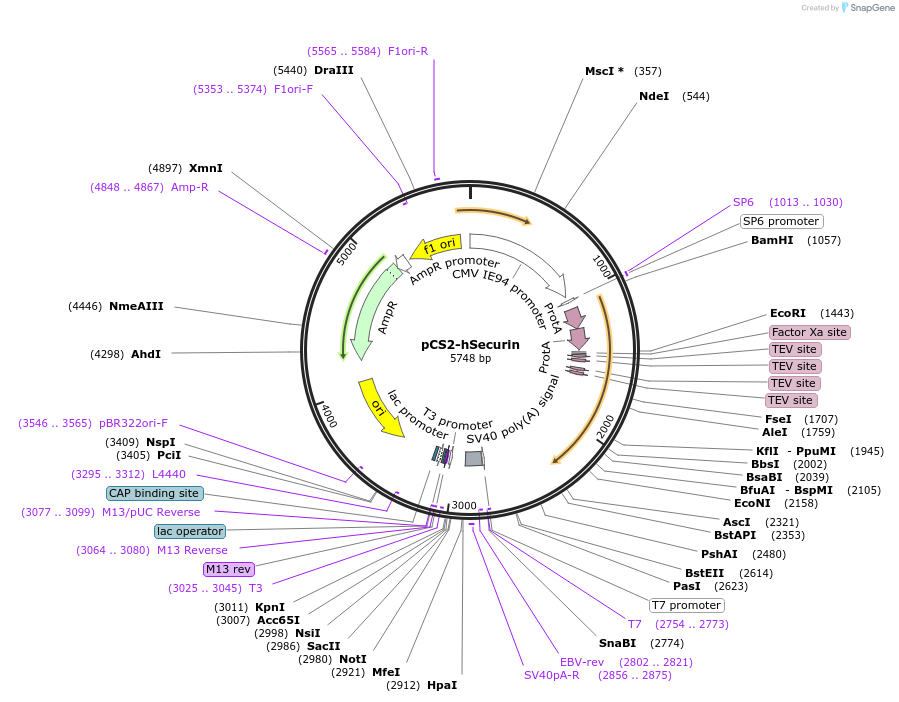pCS2-hSecurin
(Plasmid
#32903)
-
Depositing Lab
-
Publication
-
Sequence Information
Ordering
| Item | Catalog # | Description | Quantity | Price (USD) | |
|---|---|---|---|---|---|
| Plasmid | 32903 | Standard format: Plasmid sent in bacteria as agar stab | 1 | $89 | |
Backbone
-
Vector backbonepCS2+
-
Backbone manufacturerRZPD
- Backbone size w/o insert (bp) 4000
-
Modifications to backboneModified with N-term ZZ-Tev4 (two IgG binding domains of protein A (ZZ), followed by four TEV-protease cleavage sequences).
-
Vector typeMammalian Expression ; in vitro translation
Growth in Bacteria
-
Bacterial Resistance(s)Ampicillin, 100 μg/mL
-
Growth Temperature37°C
-
Growth Strain(s)DH5alpha
-
Copy numberHigh Copy
Gene/Insert
-
Gene/Insert nameSecurin
-
SpeciesH. sapiens (human)
-
Entrez GenePTTG1 (a.k.a. EAP1, ECRAR, HPTTG, PTTG, TUTR1)
- Promoter simian CMV IE94
-
Tag
/ Fusion Protein
- ZZ-Tev4 (N terminal on backbone)
Cloning Information
- Cloning method Restriction Enzyme
- 5′ cloning site none (unknown if destroyed)
- 3′ cloning site none (unknown if destroyed)
- 5′ sequencing primer CMV fwd
- 3′ sequencing primer M13 reverse
- (Common Sequencing Primers)
Terms and Licenses
-
Academic/Nonprofit Terms
-
Industry Terms
- Not Available to Industry
Trademarks:
- Zeocin® is an InvivoGen trademark.
Depositor Comments
N-terminal tag is two IgG binding domains of protein A (ZZ), followed by four TEV-protease cleavage sequences.
These plasmids were created by your colleagues. Please acknowledge the Principal Investigator, cite the article in which the plasmids were described, and include Addgene in the Materials and Methods of your future publications.
-
For your Materials & Methods section:
pCS2-hSecurin was a gift from Marc Kirschner (Addgene plasmid # 32903 ; http://n2t.net/addgene:32903 ; RRID:Addgene_32903) -
For your References section:
Dual inhibition of sister chromatid separation at metaphase. Stemmann O, Zou H, Gerber SA, Gygi SP, Kirschner MW. Cell. 2001 Dec 14;107(6):715-26. 10.1016/S0092-8674(01)00603-1 PubMed 11747808



